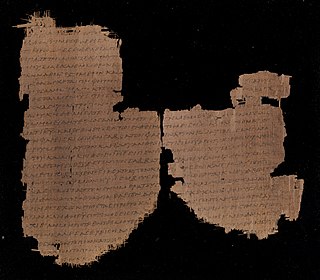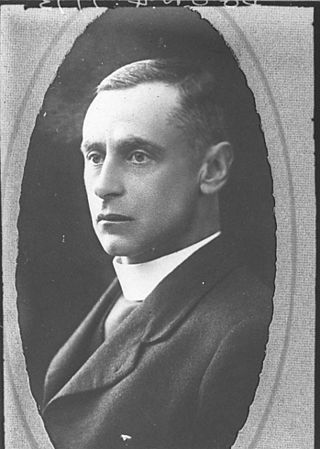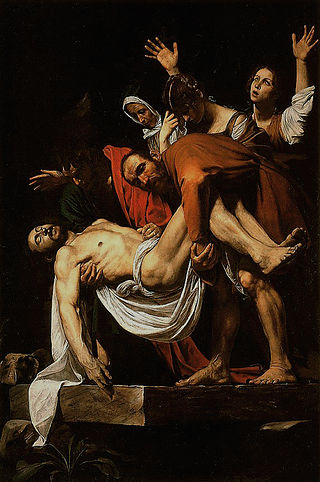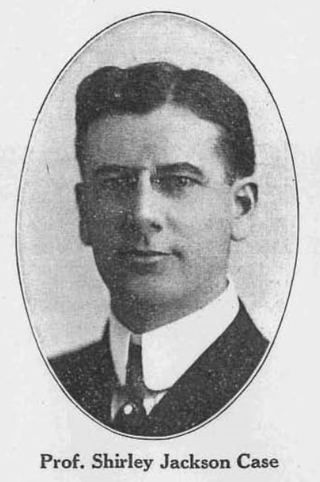Related Research Articles

The Acts of the Apostles is the fifth book of the New Testament; it tells of the founding of the Christian Church and the spread of its message to the Roman Empire.

Christ, used by Christians as both a name and a title, unambiguously refers to Jesus. It is also used as a title, in the reciprocal use "Christ Jesus", meaning "the Messiah Jesus" or "Jesus the Anointed", and independently as "the Christ". The Pauline epistles, the earliest texts of the New Testament, often refer to Jesus as "Christ Jesus" or just "Christ".

The Gospel of Luke tells of the origins, birth, ministry, death, resurrection, and ascension of Jesus Christ. Together with the Acts of the Apostles, it makes up a two-volume work which scholars call Luke–Acts, accounting for 27.5% of the New Testament. The combined work divides the history of first-century Christianity into three stages, with the gospel making up the first two of these – the life of Jesus the Messiah from his birth to the beginning of his mission in the meeting with John the Baptist, followed by his ministry with events such as the Sermon on the Plain and its Beatitudes, and his Passion, death, and resurrection.

The resurrection of Jesus is the Christian belief that God raised Jesus from the dead on the third day after his crucifixion, starting – or restoring – his exalted life as Christ and Lord. According to the New Testament writing, Jesus was firstborn from the dead, ushering in the Kingdom of God. He appeared to his disciples, calling the apostles to the Great Commission of forgiving sin and baptizing repenters, and ascended to Heaven.
Antisemitism and the New Testament is the discussion of how Christian views of Judaism in the New Testament have contributed to discrimination against Jewish people throughout history and in the present day.

The Jesus Seminar was a group of about 50 biblical criticism scholars and 100 laymen founded in 1985 by Robert Funk that originated under the auspices of the Westar Institute. The seminar was very active through the 1980s and 1990s, and into the early 21st century.
Marcionism was an early Christian dualistic belief system that originated with the teachings of Marcion of Sinope in Rome around the year 144. Marcion was an early Christian theologian, evangelist, and an important figure in early Christianity. He was the son of a bishop of Sinope in Pontus. About the middle of the 2nd century (140–155) he traveled to Rome, where he joined the Syrian Gnostic Cerdo.

Barabbas was, according to the New Testament, a prisoner who was chosen over Jesus by the crowd in Jerusalem to be pardoned and released by Roman governor Pontius Pilate at the Passover feast.
The term "historical Jesus" refers to the life and teachings of Jesus as interpreted through critical historical methods, in contrast to what are traditionally religious interpretations. It also considers the historical and cultural contexts in which Jesus lived. Virtually all scholars of antiquity accept that Jesus was a historical figure, and the idea that Jesus was a mythical figure has been consistently rejected by the scholarly consensus as a fringe theory. Scholars differ about the beliefs and teachings of Jesus as well as the accuracy of the biblical accounts, with only two events being supported by nearly universal scholarly consensus: Jesus was baptized and crucified.

The Christ myth theory, also known as the Jesus myth theory, Jesus mythicism, or the Jesus ahistoricity theory, is the view that the story of Jesus is a work of mythology with no historical substantiality. Alternatively, in terms given by Bart Ehrman paraphrasing Earl Doherty, it is the view that "the historical Jesus did not exist. Or if he did, he had virtually nothing to do with the founding of Christianity."

The Bampton Lectures at the University of Oxford, England, were founded by a bequest of John Bampton. They have taken place since 1780.
Charles Harold Dodd (1884–1973) was a Welsh New Testament scholar and influential Protestant theologian. He is known for promoting "realized eschatology", the belief that Jesus' references to the kingdom of God meant a present reality rather than a future apocalypse. He was influenced by Martin Heidegger and Rudolf Otto.

The Mosaic covenant or Law of Moses – which Christians generally call the "Old Covenant" – played an important role in the origins of Christianity and has occasioned serious dispute and controversy since the beginnings of Christianity: note for example Jesus' teaching of the Law during his Sermon on the Mount and the circumcision controversy in early Christianity.
Lewis's trilemma is an apologetic argument traditionally used to argue for the divinity of Jesus by postulating that the only alternatives were that he was evil or mad. One version was popularised by University of Oxford literary scholar and writer C. S. Lewis in a BBC radio talk and in his writings. It is sometimes described as the "Lunatic, Liar, or Lord", or "Mad, Bad, or God" argument. It takes the form of a trilemma — a choice among three options, each of which is in some way difficult to accept.
This is a glossary of terms used in Christianity.
Craig Alan Evans is an American biblical scholar. He is a prolific writer with 70 books and over 600 journal articles and reviews to his name.

The burial of Jesus refers to the entombment of the body of Jesus after crucifixion, before the eve of the sabbath described in the New Testament. According to the canonical gospel narratives, he was placed in a tomb by a councillor of the Sanhedrin named Joseph of Arimathea; according to Acts 13:28–29, he was laid in a tomb by "the council as a whole". In art, it is often called the Entombment of Christ.

Christianity in the 1st century covers the formative history of Christianity from the start of the ministry of Jesus to the death of the last of the Twelve Apostles and is thus also known as the Apostolic Age. Early Christianity developed out of the eschatological ministry of Jesus. Subsequent to Jesus' death, his earliest followers formed an apocalyptic messianic Jewish sect during the late Second Temple period of the 1st century. Initially believing that Jesus' resurrection was the start of the end time, their beliefs soon changed in the expected Second Coming of Jesus and the start of God's Kingdom at a later point in time.

Shirley Jackson Case (1872–1947) was an historian of early Christianity, and a liberal theologian. He served as dean of the Divinity School at the University of Chicago.
References
- 1 2 3 Cleal, Edward E. (1908). The Story of Congregationalism in Surrey. London: James Clarke & Co. pp. 327-328
- 1 2 3 Guppy, Henry. (1970). Bulletin of the John Rylands Library. Volume 52. Manchester University Press. p. 5
- ↑ Hart, James. (1920). Reviewed Work: The Relation of Custom to Law by Gilbert T. Sadler. Virginia Law Review 7 (3): 241-244.
- ↑ Husik, Isaac. (1920). Reviewed Work: The Relation of Custom to Law by Gilbert T. Sadler. University of Pennsylvania Law Review and American Law Register 68 (3): 304-305.
- ↑ Llewellyn, Karl. (1920). Reviewed Work: The Relation of Custom to Law by Gilbert T. Sadler. Yale Law Journal 29 (3): 368.
- ↑ A. F. (1917). Reviewed Work: The Origin and Meaning of Christianity by Gilbert T. Sadler. International Journal of Ethics 28 (1): 131-132.
- ↑ "The Denial of the Historicity of Jesus in Past and Present". Arthur Drews (1865-1935).
- ↑ Evans, Craig A. (2004). The Historical Jesus. Volume 1. Routledge. p. 320. ISBN 0-415-32751-2